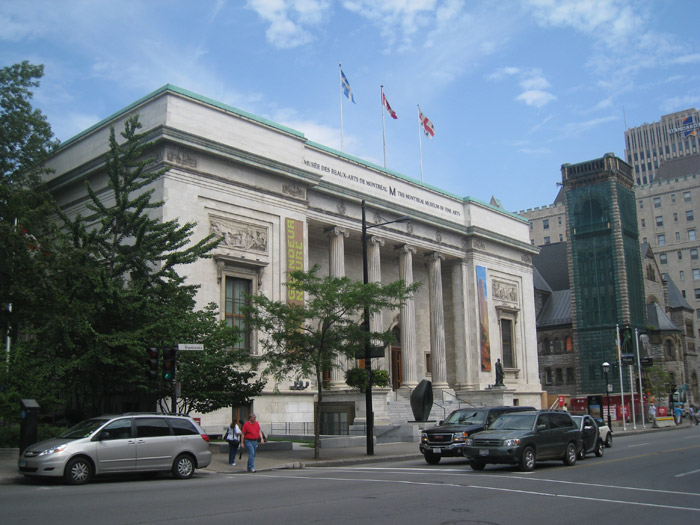On Nov. 5, as part of McGill Innovation Week 2014, art and technology enthusiasts alike gathered in Tanna Schulich Hall for a panel discussion on art and innovation. The event was organized by Standpoints, a student-run cultural think-tank.
The night’s speakers included Stéphane Aquin, curator of contemporary art at the Fine Arts Museum of Montreal; Philippe Demers, co-founder and managing director at MASSIVArt; Fabrice Marandola, associate director of artistic research at the Centre for Interdisciplinary Research in Music Media and Technology (CIRMMT); and Frédérique Marseille, co-founder of Art Bang Bang.
The evening’s discussion began with a question from the emcee: “What are the latest and most striking innovations in art according to you?”
Speaking from their experiences, the experts brought unique and often opposing perspectives to the discussion about the role of technology in contemporary art and its effects on the artistic experience for both artists and viewers.
“It gives a new medium—[before] you could paint, you could make sculptures, you could use wood,” explained Marseille. “Now, with technology, you can use tools like computers and photoshop [to make] gifs, memes, and videos.”
A recurring theme throughout the talk was how technology has revolutionized the art industry.
“The use of sensors in music [by which] sound can be produced without physical impact has created a disconnect between the musician and his instrument,” Marandola said.
A portion of the discussion focused on how the internet and social media has created opportunities for artists to expand their mode of expression.
Demers specifically discussed how the Google Cultural Institute’s Art Project has made high-resolution images of art from the world’s most prestigious museums accessible to anyone with an internet connection.
“You can get your curiosity piqued, and then go to Google or Wikipedia to learn more about it,” explained Marseille.
After the discussion, the panel members engaged in a question and answer session with the audience and were asked to express their views on the ‘museum selfie’ phenomenon—the act of taking a selfie in front of an art piece. Each of the panel members admitted to taking selfies at one point or another.
“The internet allows people from all over the world to appreciate the same image and relate to common experiences,” Demers explained.
According to Marseille, the internet is the greatest tool artists currently have to make their art accessible.
“It’s an accessible way for people to get in tocuh with art,” Marseille said. “It’s an open door for people who want to learn more about it but don’t know where to start.”
The larger the audience, the more chance an artist has to develop fans.
While the discussion was dominated by the opportunities technology has provided to appreciate and disseminate art, Aquin nonetheless concluded on a more old-fashioned note.
“Robotic art has not replaced the validity and relevance of traditional [art] forms,” Aquin said.
Instead, things like Instagram and Facebook have provided a unique and new expression medium. These tools also allow anyone and everyone to get involved in art.
“There are lot of apps now that give people the opportunity to make new images,” explained Marseille. “You can match pictures on your phone with other pictures and create new perspectives.”
All the panellists spoke on the merit of technology to express art. However, certain aspects of art—in the physical form—cannot be forgotten.
“You can’t hang a computer on your wall,” said Marseille.









